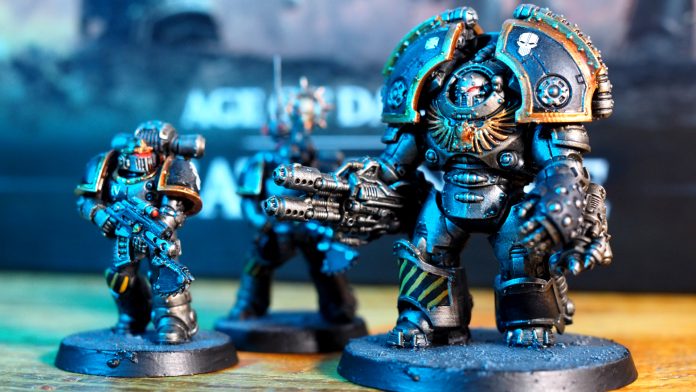Why you can trust GamesRadar+ Our experts review games, movies and tech over countless hours, so you can choose the best for you. Find out more about our reviews policy.
Warhammer: The Horus Heresy Saturnine most definitely means business. Your first hint will be the heavy, ground-shaking thud as its box lands on your doorstep. This is a weighty beast, with enough heft to challenge a stack of the best board games combined.
Your second inkling will be its deluge of plastic sprues with countless variant pieces, weapon options, accessories, and greebly bits designed to make your Warhammer: The Horus Heresy Saturnine models look that much grungier (after all, there is only war in the grim darkness of the future). Oh, and don’t forget the chunky rulebook crammed with mechanics to let you play out miniature battles in more detail than most rival systems.
Your response to this – elation or abject panic – will be a good indicator of whether Horus Heresy’s Third Edition is for you. If you’re new to the Warhammer hobby at large, I can see it being… well, maybe a little much. (And that’s fair enough; this system is unashamedly intricate, and that won’t gel with everyone.) If you’re a long-in-the-tooth veteran like me who adores a bit of nitty-gritty in his rules, though, you’ll feel right at home. I was able to lay my Chaos-enriched Lightning Claws on Saturnine ahead of release, and it brought me rushing back to my earliest days in the hobby. This feels like old-school Warhammer in the best way.
Experienced Horus Heresy fans are going to be delighted as well. Despite being an enhancement of existing rules rather than a break-the-wheel reinvention, Third Edition tightens any loose parts to make for a better, more intuitive experience overall. If anything, it bolsters what makes the Horus Heresy work so well.
Keeping your Cool
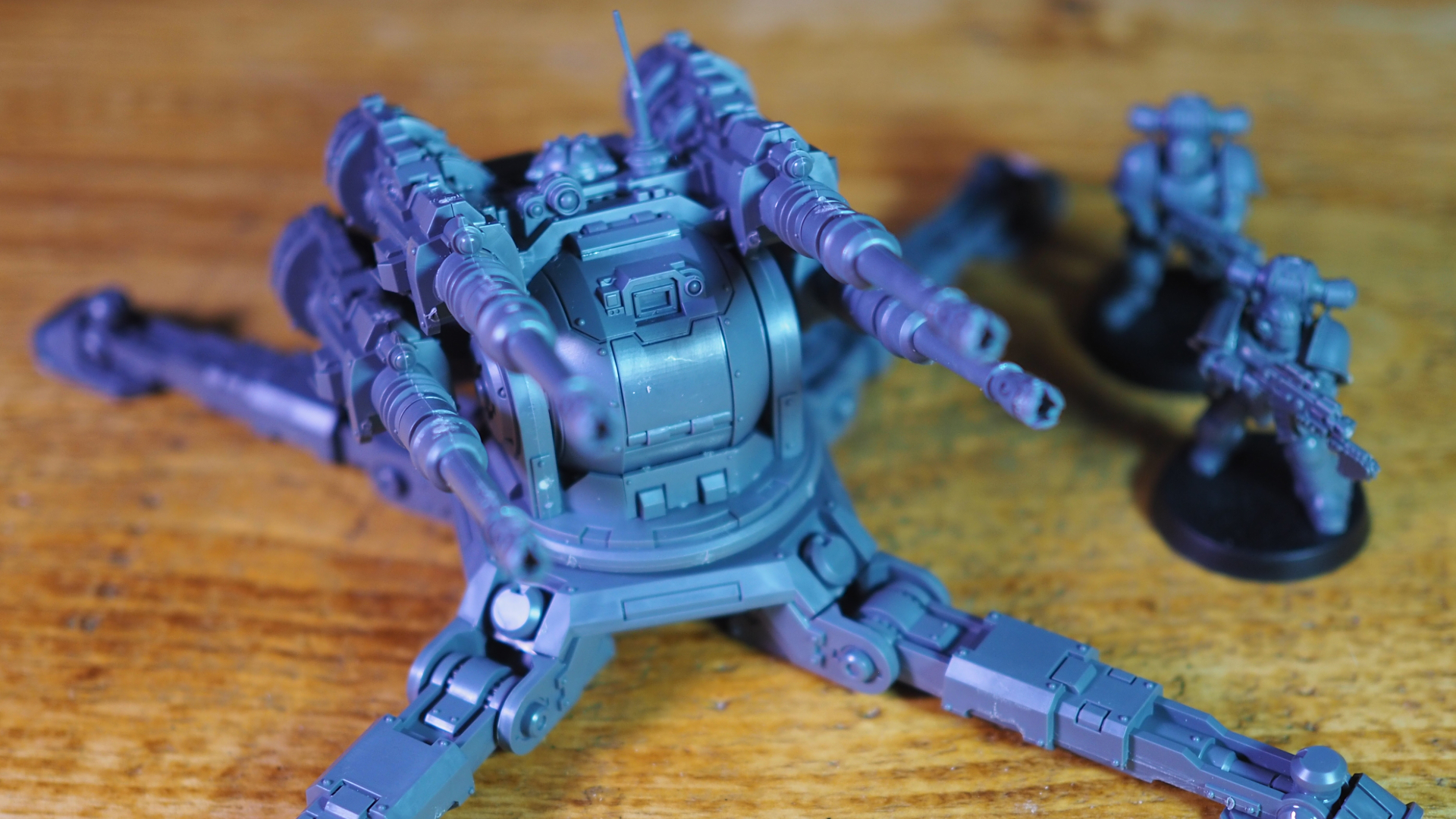
Warhammer: The Horus Heresy Saturnine is the latest core box for the system (replacing the previous version we were rather fond of), and it’s launching alongside a new, third edition of the game. Although that effectively makes it a ‘starter set’ which provides everything you need to kick off the hobby, don’t get the wrong idea; it isn’t a simplified version of the Horus Heresy (or its models) to ease newcomers in gently. This is the complete package with a full, up-to-date core rulebook dropping alongside masses of multi-part sprues. These are a lot more fiddly than your average Warhammer 40K starter sets, or the Kill Team Starter Set; rather than being push-fit, the models have a multitude of optional extras and weapons so that you can construct highly customized squads. There’s a lot of room to personalize here, so if you’re the kind of person who likes to get into the weeds of army building with a unique force, you’ll wind up happy. If you’ve never made a Warhammer model before, however, brace yourself – it’s gonna be tough.
What’s in the box?
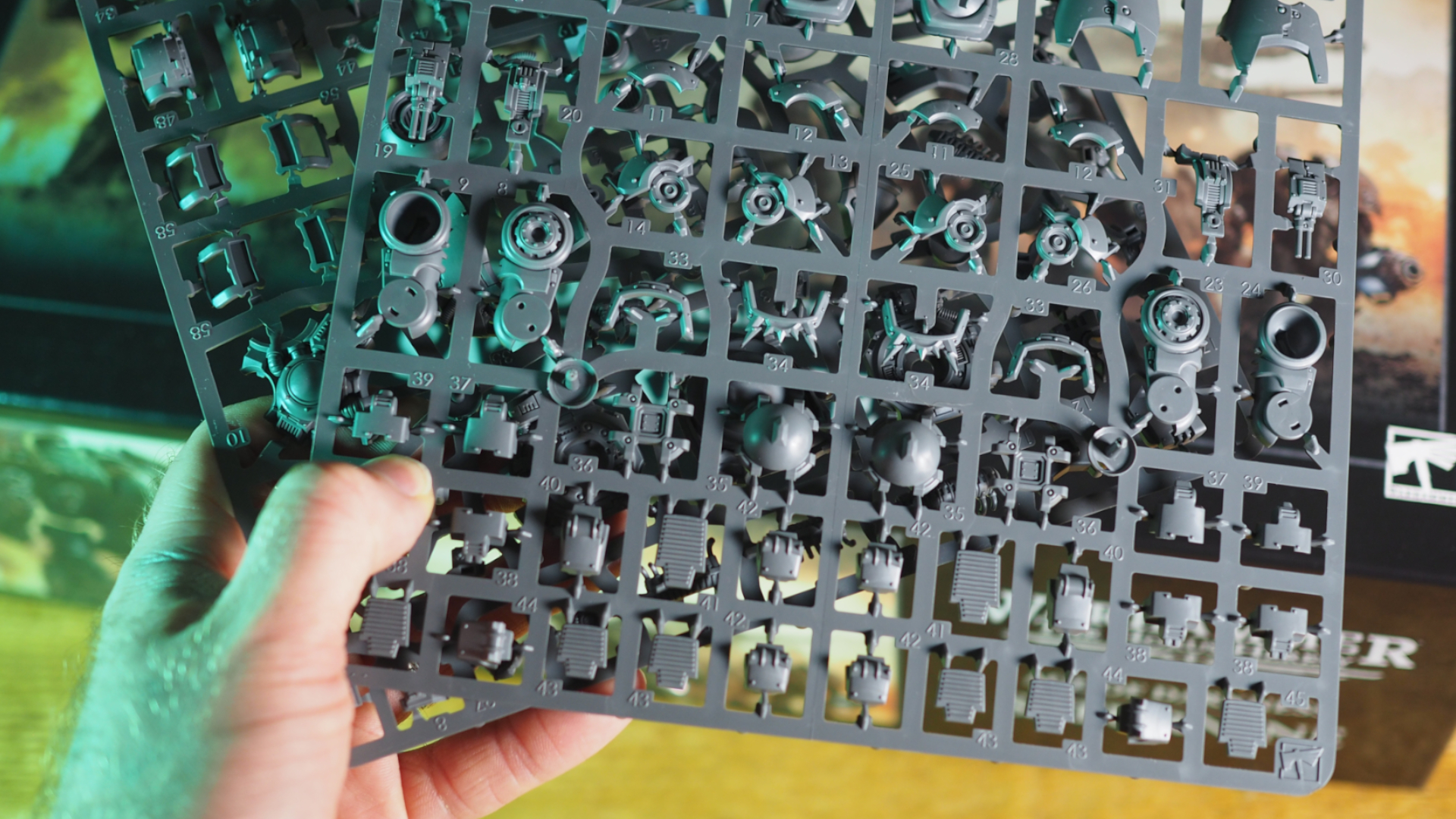
Saturnine is jam-packed with goodies: like so many other Warhammer core boxes, but this one feels like even better value than usual. Besides the updated core rulebook, quick start guide, dice, and accessories you’d expect, you’ll become the proud general of 40 MkII Legionaries (your rank and file) who can be made into standard infantry or more experienced troopers, six heavily-armored Saturnine Terminators that aren’t to be messed with, an enormous Saturnine Dreadnought that is basically a walking tank, the Araknae Quad Accelerator Platform gun turret, a Centurion in MkII armor, and a Saturnine Praetor to lead them. As suggested by the box artwork, These can be split down the middle into two forces or used as a single army. I decided to paint mine as Iron Warriors for a couple of reasons; they’re a cool faction, but are also a lot easier to paint en-masse thanks to being primarily silver.
Nevertheless, ‘tough’ is kinda Horus Heresy’s thing. This is a complex, multi-layered knot of strategy compared to its more nimble siblings, and the game revels in the complex rules that Warhammer 40K dropped a few editions ago. Tabletop games with a lot of math and overlapping mechanics are often called “crunchy,” and make no mistake: Horus Heresy is most definitely crunchy. Although it’s been streamlined to an extent, third edition and the Saturnine box set exemplify this added depth.
As an example, every warrior has an extensive stat block that now includes a broken-down Leadership stat. Before, characters just had a single Leadership score that meant there wasn’t much room for nuance – heroes with a higher number were good at practically everything, even if it didn’t always make logical sense. Now, on the other hand, it’s divided into a number of different categories that better represent a hero’s strengths (Cool, Intelligence, Leadership, and Willpower). Some are better at keeping calm under pressure, others will ace fixing vehicles, more can resist psychic assault, and so on. From what I’ve seen so far, this is just what the doctor/Apothecary ordered. While it does increase the game’s bookkeeping, it helps define each character so that there’s a reason to deploy different models.
I challenge you to a duel
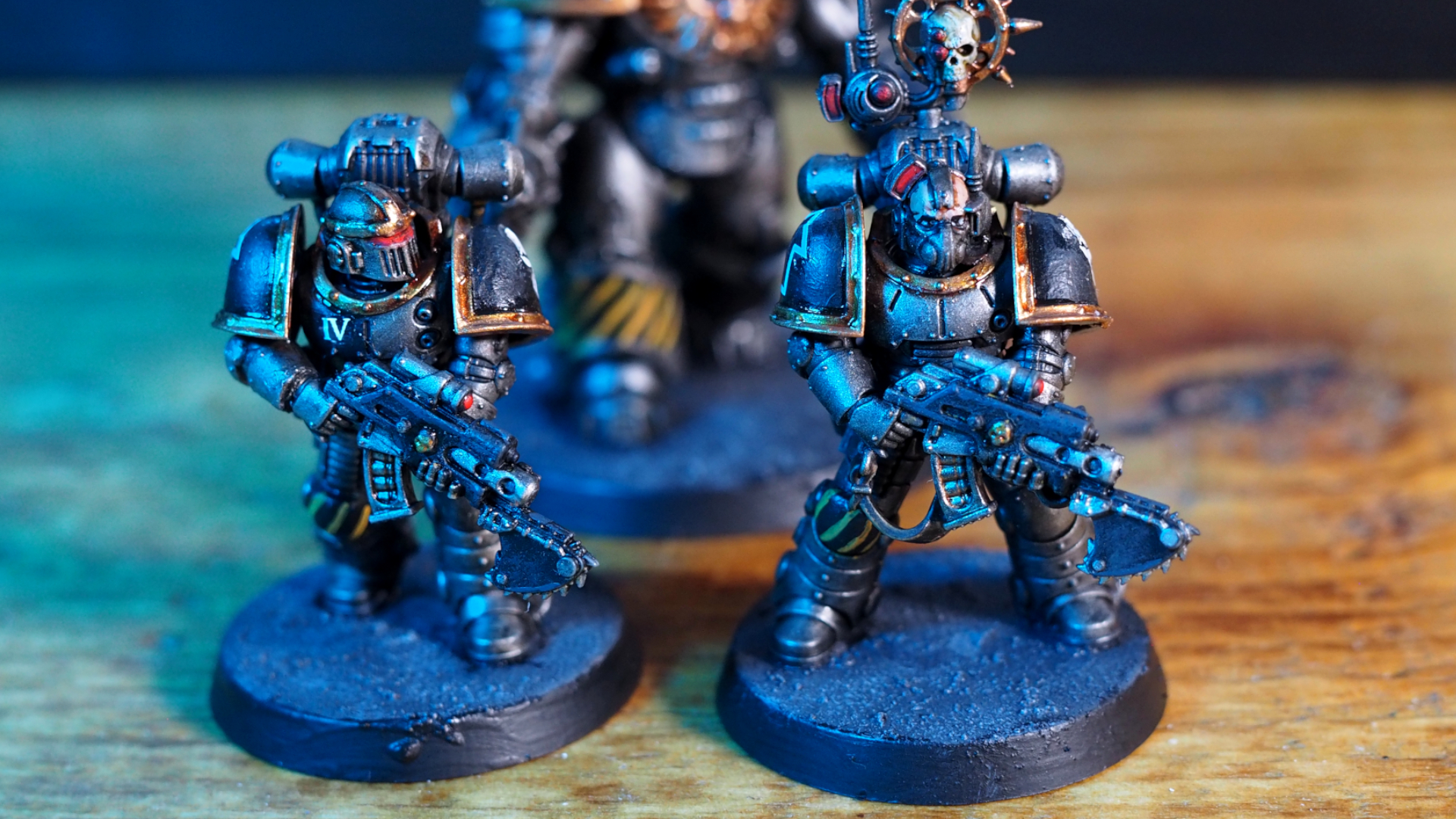
Nonetheless, Horus Heresy is still a narrative-first game in spite of this mechanical intricacy – and nowhere is this more obvious than the rulebook. The setting for this 40K prequel is incredibly rich, with over 50 novels and a wealth of games telling its tale, so there’s no surprise that the first third of the 352-page tome is a deep-dive that should bring you up to speed on important beats. It’s almost overwhelmingly exhaustive, with breakdowns of each Space Marine legion to go alongside an 11-page timeline. This is the kind of stuff I would pore over again and again as a kid, so having that backstory to dig into here means I’m practically giddy.
The third edition’s mechanics echo this story-rich ethos. ‘Challenges’ are an entirely new system that allows characters to duel, for instance. But rather than rolling combat dice as normal and calling it a day, each player has an array of ‘Gambits’ to play that can give their fighter a buff or advantage. Choosing wisely can make all the difference, and considering how you’re likely to be setting your precious named characters against each other, it’s a surprisingly tense affair.
New edition, new books… new models?
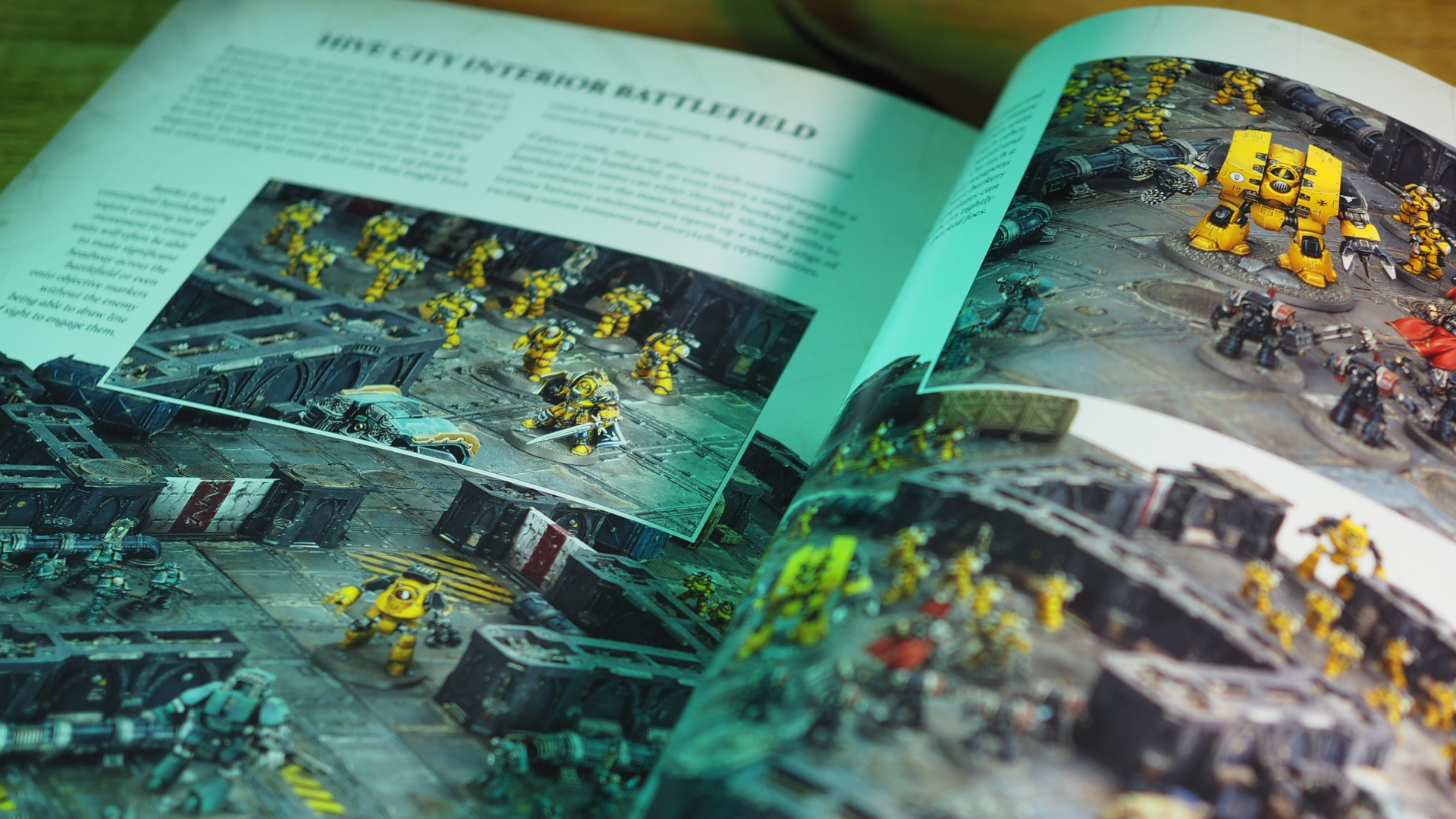
Even though this is a brand-new edition of the game, it being more of a tweak than a top-to-bottom revamp means you shouldn’t have to start your armies from scratch. Your old armies will apparently still be supported here, though you will need to rebuy the various faction books (Liber Astartes, Liber Hereticus, etc) because those have been revamped. I haven’t had those in to look at yet so can’t comment on the precise details, and it’ll be the first thing I dig into next.
Similarly, existing ideas have been condensed into new tactical statuses: pinned (forcing a unit to take cover), suppressed (under heavy fire or psychic attack), stunned (because they’ve been knocked way too hard upside the head, have survived an explosion, etc) and routed (self-explanatory). While we had similar effects before, they’ve been combined in a cohesive way that’s easier to understand but doesn’t lose any of the drama. They allow you to imagine what your little guys are going through on the tabletop warzone, which I love.
The ‘routed’ status is a new addition, and it’s the one I like most. Besides ’90s/early 2000s Warhammer 40K, I also grew up on The Lord of the Rings (now Middle-earth) Strategy Battle Game where fighters might bolt if they were overwhelmed, outmatched, or out of allies. Horus Heresy isn’t as dramatic as all that, but having to consider the psychological status of your troops gives it an added “OMG what the heck” spectacle.
Sure, it’s not all sunshine and bolter shells. The model construction instructions could be clearer in places and I’m baffled at how you don’t seem to get the full rules for each unit in your Saturnine box (there are stripped down versions for most, but not the Dreadnought or the Araknae Quad Accelerator Platform). I may be looking in the wrong place, but I’ve combed through everything I can find and only stumbled across a line saying the full rules are available in the sold-separately Liber Astartes and Liber Hereticus books. If you can’t properly use your army out of the box, that blows.
Still, those are the only complaints I have right now. I’ll continue working through those models and wrapping my head around the rules before coming back with a full review, but in the meantime: it’s a brave new (old?) world.
For more tabletop recommendations, why not check out the best tabletop RPGs or the best 2-player board games?
“>
You must confirm your public display name before commenting
Please logout and then login again, you will then be prompted to enter your display name.
